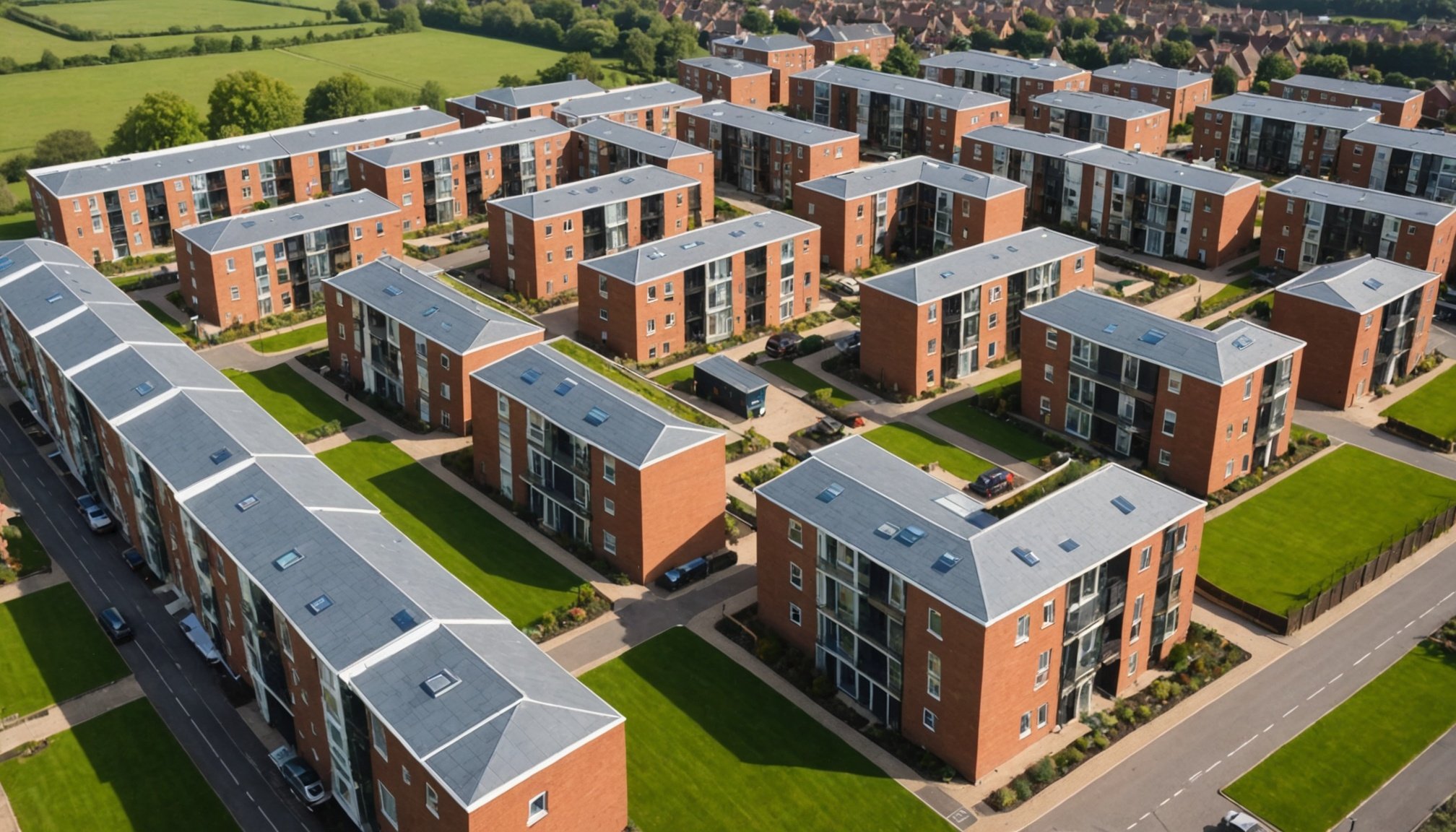Understanding Community Needs in Housing Development
Community Engagement is crucial to ensuring that housing projects meet the actual needs of a locality. Understanding the demographics and identifying key stakeholders is the first essential step. Different groups may have varying requirements that can influence a project’s success. Collaborating with these groups ensures proposals are well-informed and accepted.
To gain insights, implement tools like surveys and community forums. These allow residents to share their opinions and provide feedback. By facilitating ongoing dialogue, developers can build trust and fine-tune projects to better suit community needs. Collecting input from diverse voices helps create thriving, inclusive spaces.
In parallel : Revitalizing Urban Landscapes: Harnessing Public Green Spaces for Vibrant Community Connections
An often-overlooked aspect is the alignment of housing designs with local culture. This goes beyond mere aesthetics; it involves integrating cultural elements into both architecture and functionality. Embracing cultural significance can endear a development to its community, fostering pride and a sense of belonging.
Understanding local nuances through Community Engagement fosters projects that enhance living conditions and community spirit, ultimately leading to more successful and harmonious development outcomes. Building with the community, rather than around it, ensures long-lasting positive impacts.
In the same genre : Enhancing Rural Welsh Real Estate: The Benefits of Geothermal Heating for Homeowners
Innovative Approaches to Housing Design
Implementing sustainable design in housing projects not only enhances community engagement but also addresses environmental concerns. Integrating green spaces within developments is essential for promoting shared living and environmental consciousness. Green areas provide residents with communal spaces while improving air quality and biodiversity. Such design fosters a sense of community and encourages outdoor activities among residents.
Adaptive reuse involves repurposing existing structures for modern housing needs, offering a sustainable and often cost-effective alternative to new constructions. This approach can preserve cultural heritage while meeting contemporary housing requirements. Additionally, adaptive reuse minimizes environmental impact by reducing waste and energy consumption associated with new builds.
Several successful housing developments have showcased the benefits of innovative housing solutions. Case studies highlight projects that have incorporated community areas and sustainable practices. These projects demonstrate how incorporating sustainable design principles can lead to vibrant, resilient communities. For instance, creating rooftop gardens and incorporating renewable energy solutions like solar panels have been effective strategies.
By adopting these innovative approaches, housing developments can meet diverse community needs while promoting sustainability. This strategy not only improves living conditions but also enhances community spirit and ecological balance.
Engaging Stakeholders and Partnerships
Stakeholder Engagement is vital in housing development, as it ensures projects are aligned with community needs and expectations. Collaborating with local authorities is a key component. Local governments often have valuable insights into the community’s priorities and regulatory constraints, which can guide the project towards success. Establishing clear communication channels with these authorities is essential to maintain transparency and trust throughout the development process.
Building relationships with community organizations also plays a crucial role. Non-profits and local businesses can offer resources and support, aiding in project implementation. Collaborating with these groups can ensure that developments cater to various community segments, making them more inclusive and effective.
Another essential facet is engaging residents in the development process. Inviting residents to participate in planning sessions allows for a participatory approach, ensuring their voices are heard and incorporated. This not only fosters a sense of ownership but also enhances the overall success of the project. Community Partnerships become the lynchpin in creating developments that are not just structures but vibrant, thriving spaces where all stakeholders have a vested interest in the success and sustainability of the project.
Regulatory Frameworks Impacting Community Development
Navigating housing regulations is a critical aspect of community development projects in the UK. Adherence to these rules ensures that projects are legally compliant while aligning with broader societal goals. Understanding the nuances of social housing policies can guide developers to meet criteria for funding opportunities and grants specific to community projects.
Community development policies often emphasize inclusivity and sustainability, promoting environments where residents can thrive. These policies guide developers to incorporate certain elements, such as affordable housing units, in their plans.
When exploring funding avenues, developers should be aware of the different options available to support community projects. Grants may be provided by government bodies, non-profit organizations, or private sector initiatives, each with its own set of prerequisites. With adequate knowledge and strategic planning, developers can secure necessary resources to bring their projects to fruition.
Furthermore, engaging with the regulatory framework early in the planning process can help mitigate potential legal hurdles and ensure that projects run smoothly. It’s imperative to remain informed and agile, adapting development plans to new regulations and policies as they emerge. Compliance is not merely a legal obligation but a stepping stone towards successful, impactful community development.
Measuring Social and Economic Impact
A Community Impact Assessment is essential for evaluating housing projects’ social and economic benefits. By rigorously analysing a project’s influence, developers can understand its contributions to the well-being of residents and the broader community. Employing both quantitative and qualitative metrics allows for a comprehensive evaluation of outcomes.
Case studies are invaluable as they showcase the economic uplift stemming from well-executed, community-centered developments. These examples illustrate potential benefits, such as increased property values, local employment opportunities, and strengthened community resilience. An effective project not only improves living standards but fosters economic growth. Understanding these impacts further informs future development strategies.
Ongoing evaluation and structured feedback mechanisms, such as community forums and satisfaction surveys, are vital for ensuring these projects continue to meet evolving community needs. Regular checks enable developers to adapt to new challenges and integrate resident suggestions into management strategies.
Ultimately, aligning housing projects with the community’s goals offers lasting benefits. By focusing on both social and economic impacts, developers can meaningfully contribute to improved living conditions and sustained economic prosperity. Such proactive approaches ensure housing initiatives deliver tangible and long-term benefits.
Sustainability in Housing Development
Sustainability plays a crucial role in housing development, ensuring both community resilience and environmental responsibility. Key principles of sustainable development involve reducing the ecological footprint of housing projects while enhancing residents’ quality of life. By implementing these principles, developers create lasting positive impacts on the environment and society.
Integrating renewable energy solutions in housing projects is essential to achieving sustainability. Solar panels and wind turbines are practical options for generating clean energy, reducing reliance on non-renewable resources, and lowering carbon emissions. Utilising eco-friendly materials, such as recycled steel and bamboo, further contributes to environmental preservation by minimising waste and conserving natural resources.
Balancing development with environmental responsibilities also involves maintaining green spaces and biodiversity within housing areas. These spaces provide habitats for local flora and fauna, support ecosystem health, and offer residents areas for recreation and community events. This balance ultimately fosters a sense of belonging and enhances community well-being.
Developers are encouraged to adopt sustainable practices to promote resilient and responsible housing developments. Understanding how various elements of sustainability interconnect can lead to projects that not only meet immediate needs but also preserve resources for future generations.
Case Studies of Successful Community-Centric Developments
Exploring best practices in housing projects offers valuable insights into the creation of thriving communities. Several notable developments in the UK have successfully incorporated community-centric approaches, providing lessons learned for future initiatives.
A standout example is the Accordia development in Cambridge, which demonstrates the impact of integrating shared spaces. With ample gardens and recreational areas, residents benefit from enhanced community interactions and quality of life. This project showcases how prioritising communal spaces can lead to more connected and harmonious neighbourhoods.
Another success story can be found in the Nansledan development in Cornwall. Here, the focus was on creating sustainable housing that reflects local architectural styles. This alignment with the region’s character ensured cultural authenticity and garnered community support. Additionally, stakeholder engagement played a pivotal role, with developers actively collaborating with local authorities and organisations.
Learning from these projects, developers recognize the importance of community partnerships and stakeholder collaboration. Involving residents and aligning development goals with community values lead to sustainable and successful housing solutions. These case studies serve as a blueprint for developers aiming to enhance both community resilience and living conditions through thoughtful planning and design.










